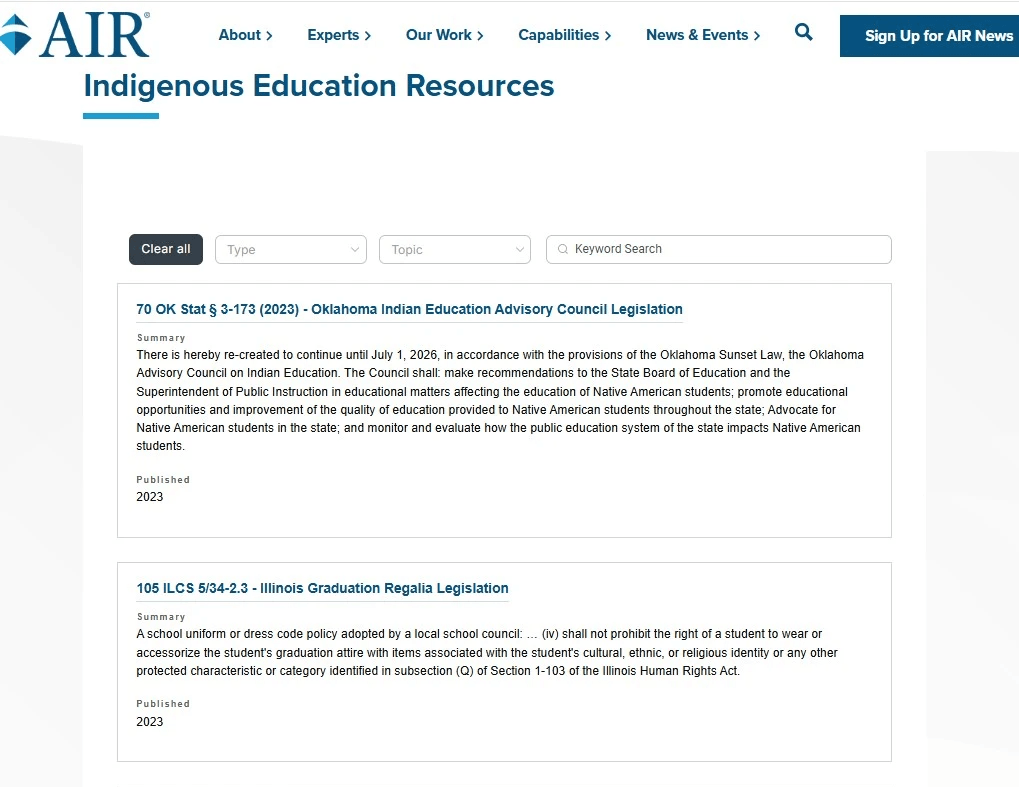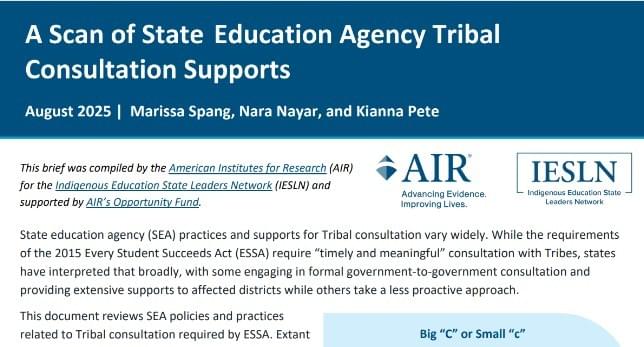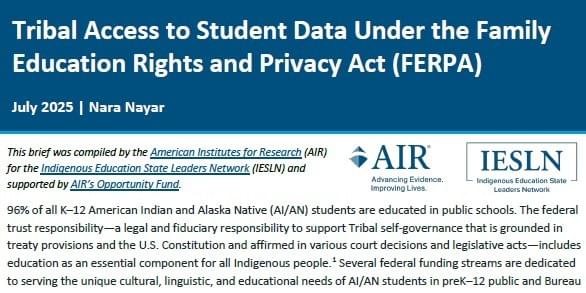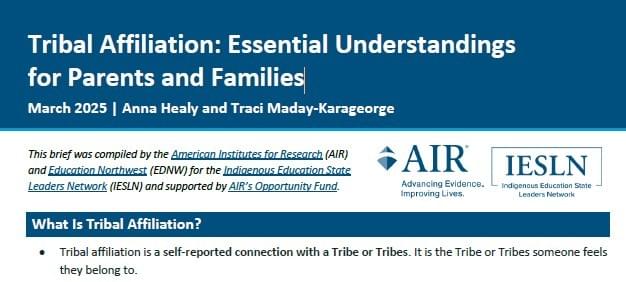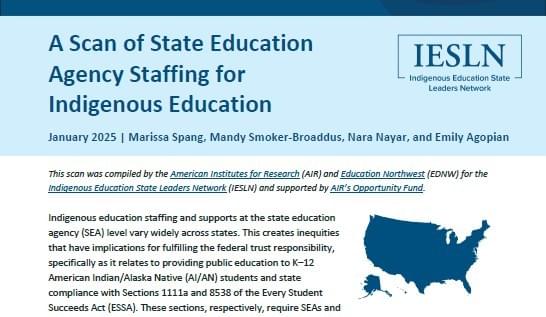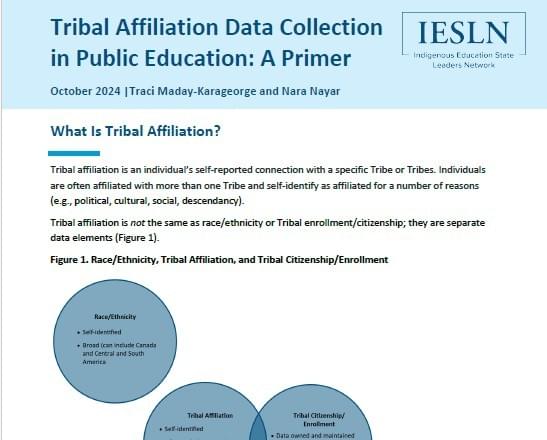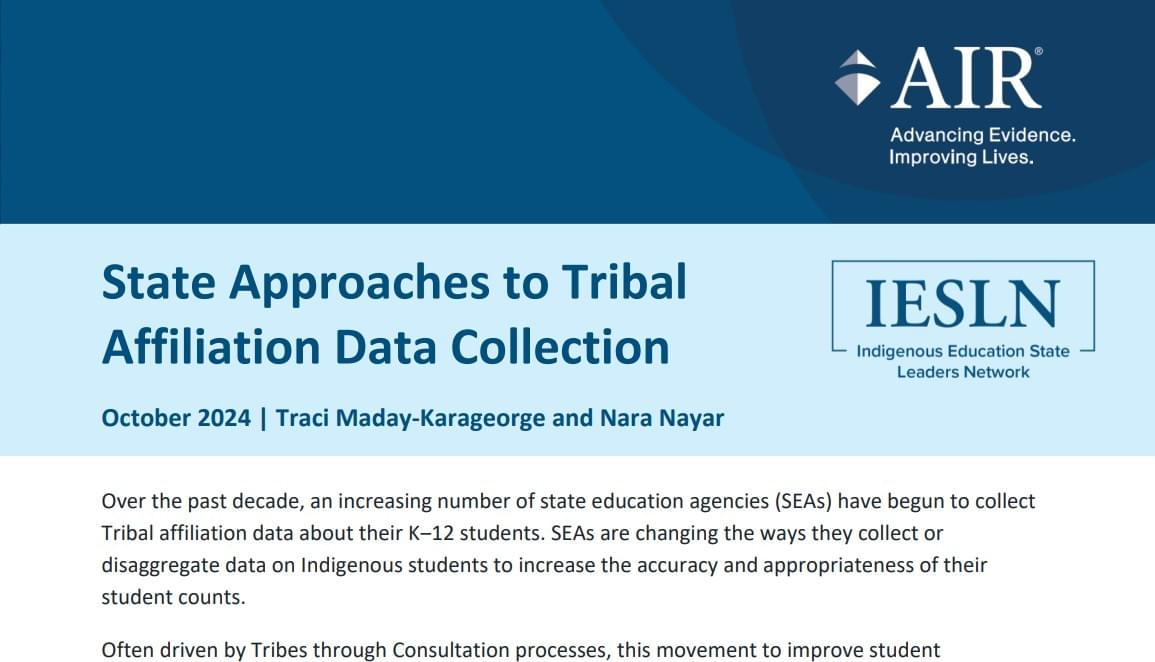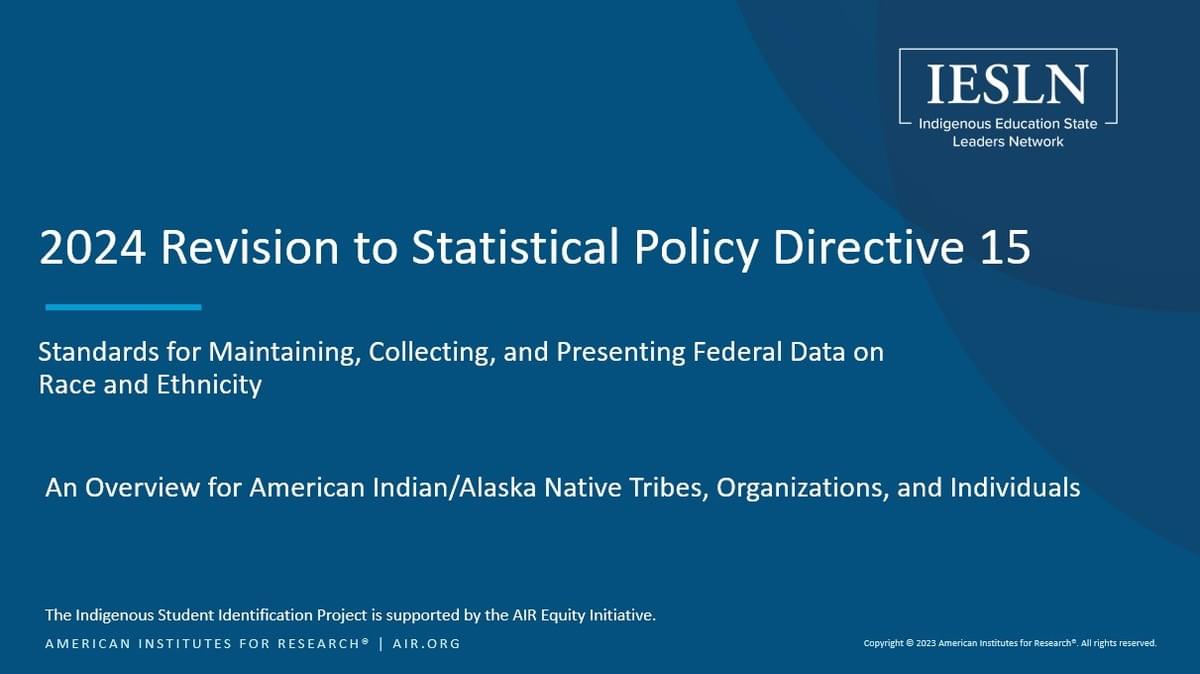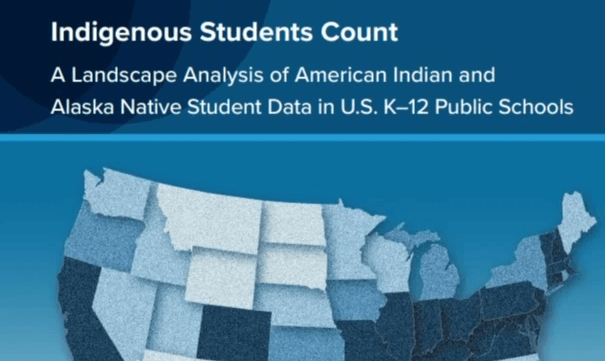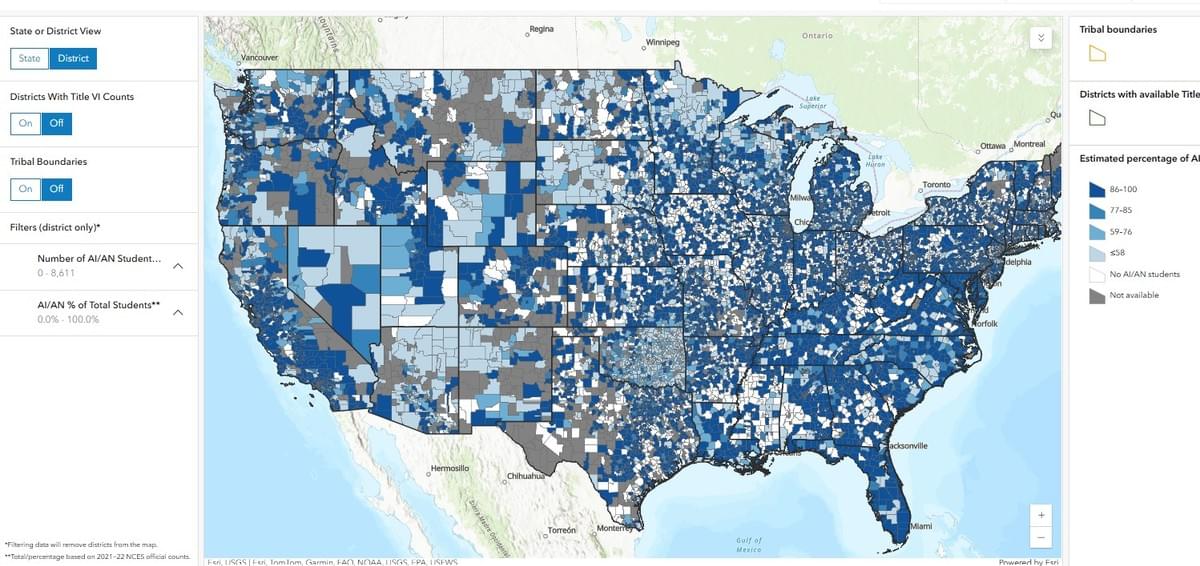

IESLN Resources
Most recent resources listed first
Sign up for our newsletter for regular updates!
This searchable database holds over 300 resources (including reports, legislation, guidance, examples, templates, and tools) developed by states, Tribes, the federal government, and Indigenous education organizations.
This 23-state scan outlines consultation requirements under the Every Student Succeeds Act and discusses state-level implementation, state education agency (SEA) supports for affected districts, and district and SEA accountability for consultation. This scan also includes an at-a-glance decision chart of ESSA requirements for Tribal consultation and their criteria, which can also be accessed as a stand-alone resource.
An explanation of the requirements of the Family Education Rights and Privacy Act with regard to sharing personally identifiable student data and information and templates to support FERPA-compliant data sharing between Tribes and districts or state education agencies.
A 2-page document explaining what Tribal affiliation is (as opposed to race/ethnicity or Tribal enrollment) and why and how schools might ask families to provide that information about their students.
This scan shows the state-by-state disparities in SEA staffing for Indigenous education and discusses funding sources SEAs use to staff positions and access to leadership and collaboration opportunities within SEAs.
This brief discusses what Tribal affiliation data is, how it differs from race or ethnicity data or Tribal citizenship data, and why collecting this data matters for schools, Tribes, and students.
This brief outlines the current approaches to Tribal affiliation data collection taken by eight state education agencies and identifies key takeaways.
This PowerPoint deck is designed to help interestholders explain the Office of Management and Budget's 2024 SPD 15 guidance clearly and simply, with notes on the implications for American Indian and Alaska Native counts specifically. It can be used as-is or modified.
This report provides an overview of the history and current context of Indigenous student identification in public K-12 schools. It includes analysis of current counts and information on promising practices.
This interactive map contains American Indian and Alaska Native student counts by state and district from the National Center on Education Statistics, Title VI Indian Education Formula Grant counts from the Office of Indian Education, and inclusive estimates of American Indian/Alaska Native students from the American Community Survey.
